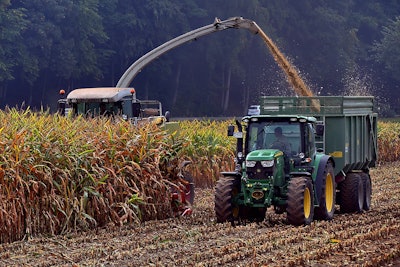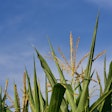
The U.S. Grains Council (USGC) has released its 2023/2024 Corn Harvest Quality Report, marking the 13th consecutive annual survey. The report unveiled a historic achievement as the 2023 U.S. corn crop emerged as the largest on record, coupled with the lowest percentage of broken corn and foreign material (BCFM) to date.
The success of the corn harvest can be attributed to favorable weather conditions in April and May, allowing producers to plant ahead of schedule. Despite initial concerns about dryness in June, a resurgence of healthy rainfall during the summer ensured proper crop maturation, leading to the timely harvest of a staggering 386.97 million metric tons (15,234 million bushels) of corn.
The aggregate quality of the representative corn samples surpassed the grade factor requirements for U.S. No. 1 grade, demonstrating exceptional crop health. According to the report, 88.0 percent of the samples met the grade factor requirements for U.S. No. 1 grade, while an impressive 96.7 percent met the grade factor requirements for U.S. No. 2.
Brent Boydston, USGC Chairman, expressed pride in the annual report's ability to showcase the consistent quality and abundance of U.S. corn. "The transparency it provides to buyers helps them make informed decisions and takes another step toward developing markets, enabling trade and improving lives," stated Boydston. "This crop’s incredible volume allows the United States to remain the world’s leading corn exporter, accounting for an estimated 26.4 percent of global corn exports."
The report, based on 611 yellow corn samples from 12 of the top corn-producing states, highlights several positive indicators. This year's corn protein concentration registered at 8.8 percent, surpassing the five-year average of 8.5 percent. The crop exhibited lower average total damage and average moisture content compared to the five-year average.
Chemical composition remained within healthy limits, with 99.5 percent of the samples testing below the U.S. Food and Drug Administration (FDA) action level for aflatoxins. Furthermore, 100 percent of the samples tested below the 5.0 parts per million FDA advisory level for deoxynivalenol, and 98.3 percent tested below the FDA's strictest guidance level of 5.0 parts per million for fumonisin.
The Council plans to share its findings globally through a series of roll-out events, commencing in China on Dec. 12. Subsequent presentations will be held in India, Korea, Panama, and Taiwan through the first quarter of 2024. These events aim to provide buyers with clear expectations regarding corn quality for the current marketing year, accompanied by insights into U.S. corn grading and handling procedures, enhancing understanding for importers and end-users.


















